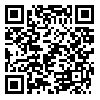
Journal of Modern Research Physics

Volume 4, Issue 2 (Autumn & Winter 2020)
JMRPh 2020, 4(2): 59-74 |
Back to browse issues page
Download citation:
BibTeX | RIS | EndNote | Medlars | ProCite | Reference Manager | RefWorks
Send citation to:



BibTeX | RIS | EndNote | Medlars | ProCite | Reference Manager | RefWorks
Send citation to:
Attar Jannesar E, Hamzehpour H. Numerical study of the manipulation of sub-micrometer particles in uncommon acoustic streaming vortices inside sinusoidal and toothed microchannels. JMRPh 2020; 4 (2) :59-74
URL: http://jmrph.khu.ac.ir/article-1-112-en.html
URL: http://jmrph.khu.ac.ir/article-1-112-en.html
K. N. Toosi University of Technology
Abstract: (1707 Views)
The creation of inadvertent steady streaming vortices inside microchannels under the effect of an external ultrasound field is a nonlinear phenomenon that was known as a troublesome effect in acoustophoretic manipulation of microparticles. In recent years this phenomenon has been treated properly and has turned into a very useful parameter in acoustic tweezing of submicrometer particles or micromixing of fluids in acoustofluid systems. The geometry of the fluid container plays a key role in the shape of acoustic streaming patterns. Because of the complexity of this effect, numerical calculations need to be carried out and predict the most convenient design for special applications. In this paper, we investigate the effect of sinusoidal as well as the toothed sidewalls of microchannels on acoustic streaming patterns and compare them with the effects of the flat sidewalls. The pattern of the three large vortices has observed in the bulk of sinusoidal and toothed microchannels in specific dimensions. Such a pattern was not achievable in a flat geometry. It allows for sinusoidal and toothed channels with a specific geometric range, to have the application of fluid mixing or particle trapping.
Keywords: Acoustophoresis, microfluidics, acoustic streaming, sinusoidal boundaries, toothed boundaries
Type of Study: Research |
Subject:
Special
Received: 2019/10/18 | Accepted: 2020/09/20 | Published: 2021/02/8 | ePublished: 2021/02/8
Received: 2019/10/18 | Accepted: 2020/09/20 | Published: 2021/02/8 | ePublished: 2021/02/8
Send email to the article author
| Rights and permissions | |
 |
This work is licensed under a Creative Commons Attribution-NonCommercial 4.0 International License. |



